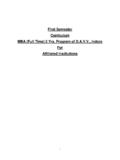Transcription of Podiatry Competency Standards for Australia and …
1 Podiatry Competency Standards for Australia and New Zealand Adopted 28 August 2009 ANZPAC Podiatry Competency Standards 2 Adopted 28 August 2009 Table of Contents Podiatry Competency Standards for Australia and New Zealand .. 3 Introduction .. 3 Background to the Podiatry Competency Standards .. 3 Competency Standards Revision Methodology .. 4 The Competency Standards .. 4 Structure and Formats .. 5 Purposes and Applications for Competency Standards .. 8 Review .. 8 Competency Standard 1: Practise Podiatry in a Professional Manner.
2 9 Competency Standard 2: Continue to Acquire and Review Knowledge for Ongoing Clinical & Professional Practice Improvement .. 10 Competency Standard 3: Communicate & Interrelate Effectively in Diverse Contexts .. 11 Competency Standard 4: Conduct Patient/client Interview and Physical Examination .. 12 Competency Standard 5: Interpret, Diagnose & Analyse .. 13 Competency Standard 6: Develop a Patient/Client-focused Management Plan .. 14 Competency Standard 7: Implement & Evaluate Management Plan .. 15 Competency Standard 8: Provide Education and Contribute to an Effective Health Care System.
3 17 Assessment of Competency Standards .. 19 Revision date: by September 2014 ANZPAC Podiatry Competency Standards 3 Adopted 28 August 2009 Podiatry Competency Standards for Australia and New Zealand Introduction The Podiatry Competency Standards for Australia and New Zealand (ANZPAC) (2009) document has been prepared by the Australian and New Zealand Podiatry Accreditation Council (ANZPAC). The report has been developed in collaboration with the Australia and New Zealand Podiatry profession, podiatric educators, Registration Boards and others, with additional consultation occurring with a range of stakeholder groups.
4 The Competency Standards document outlines the generic and occupation-specific competencies required to ensure safe and effective Podiatry services. It is based on knowledge, skills and professional qualities and relates to entry-level requirements for graduates from university programs, overseas-trained entrants, qualified returnees to the profession and to currently-employed professionals. The Podiatry Competency Standards are focused on the functions of the Podiatry role which is concerned with assessing, diagnosing, treating and preventing disorders of the lower leg and foot which have resulted from developmental abnormalities, disease or injury.
5 Podiatrists also have responsibility for educating and promoting health care issues associated with prevention (AIHW, 2006). Background to the Podiatry Competency Standards Since the 1990s, entry to the Australian and New Zealand Podiatry profession has involved meeting Competency Standards highlighting skills, knowledge and attributes for job performance (Benner, 1984; Gonczi, Hager & Oliver, 1990). Competency Standards are defined as the competencies required for effective performance in employment.
6 A Competency comprises the specification of knowledge and skill and the application of that knowledge and skill within an occupation or industry level, to the standard of performance required in employment (NOOSR). Professional competence is also about being able to transfer and apply skills and knowledge in varying situations. The 1994 Australian competencies Podiatry project and 1998 New Zealand project (and 2005 amendment under the Health Practitioners Competency Assurance Act) involved various stakeholder committees, expert panels and workshops.
7 Competency Standards and Related Assessment Methods of the Australian Podiatry Profession (APodC, 1994) for Australia and Registration Requirements: Minimum Competencies, Learning Outcomes, Performance Criteria (NZ, 2005) for New Zealand have previously outlined core requirements. Given the ever-changing health context and accountability and public safety considerations, Competency Standards need regular reviews to support podiatrists in remaining up-to-date. Podiatry in the twenty-first century in Australia and New Zealand involves a significant focus on holistic and partnership approaches which consider the overall context of individuals and their diverse needs, including in relation to carers, family and support people.
8 Diversity in relation to age and range of abilities; socio-economic, culture and language; indigenous aspects; locations such as rural, remote and metropolitan; mental state; and physical and cognitive ability are part of the patient/client-centred considerations. Workplace contexts for podiatrists are also important aspects and this includes whether the podiatrist is working in hospitals, schools, residential aged care facilities, community, sole or team private practice and also the nature of individual roles and whether supervision is involved.
9 Emergent considerations in relation to the health care system include the focus on evidence-based practice; increasing collaborative work between health professionals and the integrated services emphasis. Quality improvement and resources accountability, and legislative, ethical and other occupational health and safety frameworks are also involved. Other key aspects include accommodating ANZPAC Podiatry Competency Standards 4 Adopted 28 August 2009 change through reflection and lifelong learning; updating information and communication technology skills; the importance of critical thinking and increased focus on education and health promotion roles.
10 This work is set within the broader Podiatry and health political agenda involving a changing context of transition from registration occurring within the legislation of individual states and territories within Australia towards a national approach. Following several years of discussion, in May 2008, the Australian and New Zealand Podiatry Accreditation Council (ANZPAC) commissioned a report to evaluate various accreditation models and to outline some future directions for Podiatry .






